…by Jonas E. Alexis
SEX AND THE INTELLECTUALS
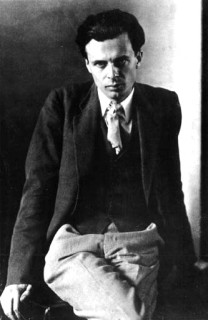 Aldous Huxley articulated a principle in the preface of his Brave New World that seems to represent the weltanschauung of many intellectuals—both past and present.[1] Huxley wrote:
Aldous Huxley articulated a principle in the preface of his Brave New World that seems to represent the weltanschauung of many intellectuals—both past and present.[1] Huxley wrote:
“As political and economic freedom diminishes, sexual freedom tends compensatingly to increase. And the dictator (unless he needs cannon fodder and families with which to colonize empty or conquered territories) will do well to encourage that freedom. In conjunction with the freedom to daydream under the influence of dope and movies and the radio, it will help to reconcile his subjects to the servitude which is their fate.”[2]
The sexual calculus, then, is pretty clear: sexual freedom leads to sexual possibilities, and when that takes place, people are going to get hurt. As Marquis de Sade put it,
“The philosopher sates his appetites without inquiring to know what his enjoyments may cost others, and without remorse.”[3]
One needn’t be an intellectual to see that this inexorably provides a form of justification for things like rape, sodomy and pornography.
In other words, Sade and other Enlightenment writers were just postulating intellectual justifications for the sexual revolution, which had its trajectory through the sixties and all the way to Miley Cyrus and Lady Gaga and Hollywood. Moreover, the French Revolution, which was essentially Masonic in nature, was the “reign of terror” both politically and sexually.
Sade, the most perverted and decadent writer during the French Revolution, literally and practically took the sexual calculus to its zenith. First, Sade had to deconstruct morality in its transcendent form. Sade tells us,
“Virtue is not some kind of mode whose value is incontestable, it is simply a scheme of conduct, a way of getting along, which varies according to accidents of geography and climate and which, consequently, has no reality…virtue is not in any sense real, nor in any wise intrinsically good and in no sort deserves our reverence.”[4]
Once morality was simplified to geography, the next logical step for Sade was to open the door for sexual liberation. He moves on to dogmatize,
“A pretty girl ought simply to concern herself with fu$king, and never with engendering.”[5]
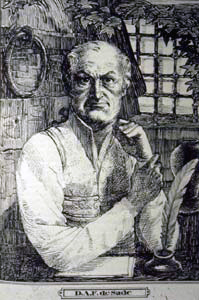 Sade’s sexual philosophy did not come out of thin air. He read virtually everything that Voltaire and La Mettrie and D’Holbach had written. Both D’Holbach and Lamettrie were interested in sexual possibilities, and Sade was like a scientist who put the philosophy of those men into a sexual laboratory.
Sade’s sexual philosophy did not come out of thin air. He read virtually everything that Voltaire and La Mettrie and D’Holbach had written. Both D’Holbach and Lamettrie were interested in sexual possibilities, and Sade was like a scientist who put the philosophy of those men into a sexual laboratory.
When he came out of the sexual lab, Sade had mutated into a completely sexual pervert, producing works such as 120 Days of Sodome and Justine: Philosophy in the Bedroom.
As E. Michael Jones puts it, the “combination of Enlightenment thought and masturbation would not only become the dialectic of Sade’s life in prison, where he would read and masturbate and then read and masturbate some more. It would also become the structure of his fiction, and as a result of that it would also become the defining dialectic of sexual liberation.”[6]
Sade, once again, was following the logical premise of the Enlightenment which was quite visceral among the Enlightenment intellectuals in France, where D’Holbach, Diderot, Helvitius, D’Alembert, La Mettrie, among others, postulated that man is simply a machine with no freewill and conscience. Everything was physics and chemistry. Everything was determined. This idea got mutated in the twentieth century into the humanistic psychology of John B. Watson and virtually the entire school of behaviorism.
Foundational to D’Holbach’s philosophical speculation is the primitive idea that matter is not only eternal but the cause of all that exists.[7] We know that this is not the case.
Interestingly enough, in his book Enemies of the Enlightenment (which is not a bad book), intellectual historian Darrin M. McMahon discusses some of the political and ideological currents which led to the French Revolution but fails to even mention Marquis de Sade and the sexual calculus that flowed from his ideological vein.[8]
ENLIGHTENMENT PRINCIPLES AND ITS TRAJECTORY
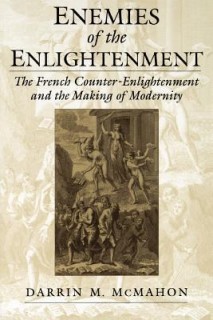 But the celebrated dictum of the Enlightenment in France—that man is a machine and that morality is just a relic of the distant past—has been indirectly reformulated in various ways by many in the academic world.
But the celebrated dictum of the Enlightenment in France—that man is a machine and that morality is just a relic of the distant past—has been indirectly reformulated in various ways by many in the academic world.
Jones writes that for Sade, morality “is really nothing more than fluid dynamics. Sade felt this would undoubtedly be proven true by some future breakthrough in materialist physiology.”[9] A brand new materialists and determinists continue to prove that Sade’s sexual experimentation would bring materialistic fruit.
Biologist Randy Thornhill and anthropologist Craig T. Palmer, author of A Natural History of Rape: Biological Bases of Sexual Coercion, propound,
“We fervently believe that, just as the leopard’s spots and the giraffe’s elongated neck are the results of aeons of past Darwinian selection, so is rape.”[10]
For Thornhill and Palmer, “There is no doubt that rape has evolutionary — and hence genetic — origins.”[11] In other words, what used to be a moral issue[12] is now biological determinism. But what is the biological evidence for this extraordinary claim? Thornhill and Palmer provided none.
Instead, the authors move to the social sciences, pointing out the number or rape that has occurred in places like South Africa. As a counterpoise, science writer Margaret Wertheim takes the issue to Peggy Reeve Sanday, an anthropologist at the University of Pennsylvania. Wertheim wrote:
“As the author of a cross-cultural study on rape in 95 different tribal societies, Sanday stresses that its incidence varies wildly from culture to culture and there are many societies in which rape is rare.
“Far from being the norm, she says, America is one of the most rape-prone of all contemporary cultures. If the biological imperative to rape is as powerful, and as universal, as Thornhill and Palmer insist, why does its frequency vary so much from culture to culture?
“Mary Cameron, an anthropologist at Auburn University, points to another flaw in Thornhill and Palmer’s thesis: “It doesn’t begin to account for male-male rape, or incest,” neither of which confer any evolutionary advantage. If, by the authors’ own admission, almost one-third of rapes are inflicted on children under 11, it is hard to see how reproductive imperatives could possibly be responsible.”[13]
Anne Fausto-Sterling, a research biologist at Brown University, also challenged some of Thornhill and Palmer’s premises and asked that they provide evidence for their bold claims. As she puts it,
“When you make a hypothesis you really need to be able to back that up with data. What you have is this new group of ‘evolutionary psychologists’ who have very different standards of proof.”[14] Other biologists came to the same conclusions.[15]
Wertheim commented, “Yet data is just what is missing from this book [A Natural History of Rape]. As with so many other neo-Darwinian accounts of human behavior now being offered by proponents of the new ‘evolutionary psychology’ movement, Thornhill and Palmer’s analysis of rape relies not on hard evidence, as they would have us believe, but on speculative flights of fancy.”
In response to their critics, Thornhill and Palmer rightly argue that some critics have tried to bring straw-man arguments to the issue.[16] But that should not let Thornhill and Palmer off the hook: they make the extraordinary claims that rape is genetic, and they ought to provide genetic evidence for this hypothesis.
Thornhill and Palmer’s view seems to correspond to what their intellectual antecedent, Charles Darwin, would have probably said. Darwin, without any biological or scientific evidence, declared in The Descent of Man:
“Man is more powerful in body and mind than woman, and in the savage state he keeps her in a far more abject state of bondage than does the male of any other animal.”[17]
As we shall see, things like rape are moral issues[18] which must be controlled by practical reason, and Thornhill and Palmer indirectly prove this point by advocating at the end of their book that teenagers ought to take rape education classes before getting a driver’s license.
Once again, if man is just matter and energy, why would those teenagers have to take rape education classes in order to combat rape itself? According to biological determinism and Newtonian physics, rape education classes cannot be more persuasive and powerful than brute genetics. What would education classes accomplish in the end?
Now let us finish with Huxley and move onto Einstein.
——————————
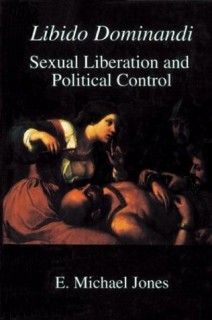 Huxley had enough history on the palm of his hands to know that the logic of sexual possibilities indirectly led to the sexual misbehavior of La Mettrie, Marquis de Sade and other men who played an influential role in ideologically agitating the French Revolution. Huxley wrote in Ends and Means:
Huxley had enough history on the palm of his hands to know that the logic of sexual possibilities indirectly led to the sexual misbehavior of La Mettrie, Marquis de Sade and other men who played an influential role in ideologically agitating the French Revolution. Huxley wrote in Ends and Means:
“De Sade’s philosophy was the philosophy of meaninglessness carried to its logical conclusion. Life was without significance. Values were illusionary ideals merely the inventions of cunning priests and kings. Sensations and animal pleasures alone possessed reality and were alone worth living for.
“There was no reason why anyone should have the slightest consideration for anyone else. For those who found rape and murder amusing, rape and murder were fully legitimate activities…
“The real reason why the Marquis could see no meaning or value in the world is to be found in those descriptions of fornications, sodomies and tortures which alternate with the philosophizings of Justine and Juliette.”[19]
Huxley ended up saying that de Sade could have been a decent man, but his sexualized ideology blinded his moral reasoning and thereby opening the door for his sexual perversion.
“His was a strictly sexual perversion. It was for flogging actresses, sticking penknives into shop-girls, feeding prostitutes on sugar-plums impregnated with cantharides, that he got into trouble with the police.
“His philosophical disquisitions, which, like the pornographic day-dreams, were mostly written in prisons and asylums, were the theoretical justification or his erotic practices.”[20]
Sade, unlike many modern intellectuals like Steven Weinberg who find themselves in a swamp of moral contradiction,[21] was consistent in following his “strictly sexual perversion.”[22] Huxley continues,
“The voluntary, as opposed to the intellectual, reasons for holding the doctrines of materialism, for example, may be predominantly erotic, as they were in the case of Lamettrie, or predominantly political, as they were in the case of Karl Marx.”[23]
Huxley, of course, was the victim of this statement. He admitted that
“For myself, as, no doubt, for most of my contemporaries, the philosophy of meaninglessness was essentially an instrument of liberation. The liberation we desired was simultaneously liberation from a certain political and economic system and liberation from a certain system of morality. We objected to the morality because it interfered with our sexual freedom…”[24]
Once again, for Huxley, the sexual calculus was pretty clear. Morality was exclusively abandoned by many intellectuals because morality interferes with the root of the philosophy of meaninglessness: sexual liberation. Huxley declared,
“More serious writers associated political with sexual prejudice and recommended philosophy (in practice, the philosophy of meaninglessness) as a preparation for social reform or revolution….
“As in the days of Lamettrie and his successors the desire to justify a certain sexual looseness played a part in the popularization of meaninglessness at least as important as that played by the desire for liberation from an unjust and inefficient form of social organization.”[25]
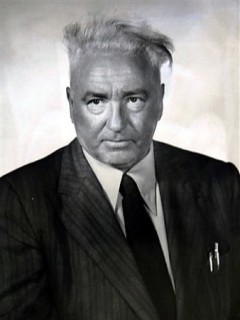
Around the same time that Huxley was interpreting the French Revolution in light of Sade’s sexual practicalities, Jewish revolutionary Wilhelm Reich was making sexual liberation more political than anything else.
Reich was a visionary because he knew that once sexual liberation becomes political, all hell will break loose. Reich personally observed this phenomenon in his own office:
“When I talk to a sexually inhibited woman in my office about her sexual needs, I am confronted with her entire moralistic apparatus. It is difficult for me to get through to her and to convince her of anything. If, however, the same woman is exposed to a mass atmosphere, is present, for instance, at a rally at which sexual needs are discussed clearly and openly in medical and social terms, then she doesn’t feel herself to be alone.
“After all the others are also listening to ‘forbidden things.’ Her individual moralistic inhibition is offset by a collective atmosphere of sexual affirmation, a new sex-economic morality, which can paralyze (not eliminate!) her sexual negation because she herself has had similar thoughts when she was alone…
“The Sexual need is given confidence by the mass situation; it assumes a socially accepted status. …Thus, it is not a question of helping, but of making suppression conscious, of dragging the fight between sexuality and mysticism into the light of consciousness, of bringing it to a head under the pressure of a mass ideology and translating it into social action.”[26]
Both Reich and Sigmund Freud attempted to project this kind of sexualized ideology into the German culture, and both found themselves in conflict with Hitler when he came to power in 1933.

Hitler single-handedly shut down the sexual laboratory which Jewish revolutionaries such as Magnus Hirschfield and Ivan Bloch had established.[27] Moreover, Hitler shut down the vast majority of the sex/entertainment industry which Jewish revolutionaries made possible in Germany.[28]
In the early 1920s, Berlin was “the vice-ridden scum”[29] which produced all kinds of sexual activities. “People from all over the industrialized world flocked to Berlin to be part of this experiment, if only for a short while.”[30] Philo-Semitic historian Paul Johnson himself declares,
“The Foxtrot and short skirts, the addiction of pleasure in ‘the imperial sewers of Berlin,’ the ‘dirt pictures’ of sexologist Magnus Hirschfeld or the typical man of the times took on in the minds of the average citizen a repugnance that is difficult to recall in hindsight without some historical effort. In a number of highly celebrated provocations, the stage of the ‘20s dealt with topics like patricide, incest and other crimes and the deepest inclination of the times tended to self-mockery.”[31]
A number of Jewish icons such as George Gershwin, Ben Hecht, Douglas Fairbanks, Sergei Eisenstein visited Hirschfeld’s Institute. Eisenstein “enjoyed the Institute’s collection of sailor-dolls—homemade paper toys that German homosexuals fashioned during the Great War.”[32] The library of the school,
“which contained the largest sex and pornographic book collection in Europe, remained accessible to all readers…Politically, the Institute provided a forum for progressive lawyers and government officials who sought to eradicate the laws against homosexuality and defend Germany’s legal abortion rights from the growing onslaught of fascist and religious parties. Most of the legal work involved suits protecting gay men against threats of petty blackmail….The Institute itself was a font of sexological activity. Pediatric care, abortions, ‘sexual rejuvenation’ and sexual ‘correction’ operations were conducted on the lower level of the main building.”[33]
The building contained all sort of sexual devices in order to advance the sexual revolution in Berlin:
“Glass cases of fetishistic objects and sex aids from preliterate, Asian, and European cultures filled two other rooms.
“In the open counters and boxes were collections of Mandigo dildos that squirted a milky solution, Moche water bottles with penis-shaped spouts, Sanskrit sex manuals, miniature shoes worn by bound-foot Chinese courtesans, medieval chastity belts, torture instruments from a German brothel, sadistic drawings and assemblages created by Lustmord convicts, an entire picture window of ankle boots donated by a local fetishist, antique steam-driven vibrators, fake rubber breasts and vaginas taken from transvestite prostitutes, lacy panties found on the corpses of von Hindenburg’s heroic officers, and other such incontrovertible evidence of Hirschfeld’s new calculus of desire.”[34]
Even D. H. Lawrence, himself a proponent of sexual liberation, knew that the Weimar Republic had become a place for sexual debauchery, writing in a letter that “at night you feel strange things stirring in the darkness…There is a sense of danger…a queer, bristling feeling of uncanny danger.”[35]
Later, Christopher Isherwood, a homosexual and proponent of sexual liberation, went to Berlin to immerse himself into the gay bars, writing later, “There was terror in the Berlin air.”[36]
During that era, the Weimar Republic “stimulated all the external tics of sexual perversity. In the center of Europe, mesmerized audiences were warned, sits a nightmare municipality, a human swamp of unfettered appetites and twisted prurient proclivities…With Babylon and Nero’s Rome, Weimar Berlin has entered into our topological thesaurus as a synonym for moral degeneracy.”[37]
Gordon goes so far as to say that during that period Berlin “would have to be considered as one of the most faithless—or heathen—cities in the Western world.”[38] Why? Because sexual decadence and perversion were widespread— so widespread in fact that Jewish revolutionaries used a “scientific” pretension to promote pornography.
Jewish scholar Gordon writes, “Clinical studies of sexual perversion, such as von Krafft-Ebing’s Psychopathia Sexualis (Leipzig, 1901) and [Wilhelm] Stekel’s Sexual Aberrations (Vienna, 1922) were printed by scientific publishing houses and produced principally for therapists and legal scholars in Central Europe.”[39]
We will come back to the Weimar era in the future. But the sexual moment of that period was indeed short-lived largely because Hitler overturned the plans of Hirshfield and other sexual perverts like Freud and Reich by making life a living hell for them.
It was no accident that organized Jewry was mobilized even before the rise of Nazi Germany to propagate that at least six million Jews were being exterminated.
EINSTEIN MEETS WILHEIM REICH
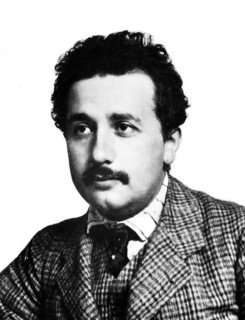
Our story became interesting when Reich, in January of 1941, discussed his sex economy with Albert Einstein for nearly five hours. When Einstein thought that anti-Semitism was on the rise in Germany, Reich wrote him a letter saying that he had discovered “specific biologically effective energy which behaves in many respects differently to all that is known about electromagnetic energy.”
For Reich, this “biologically effective energy” could be used “in the fight against the Fascist pestilence.”[40] And this sexualized ideology would be a “rival, perhaps, to the incipient atomic bomb.”[41]
We never know how much influence Reich had on Einstein, or vice versa, but it was pretty clear that both individuals understood each other. At one point, “Reich told his wife ‘how exciting it was to talk to someone who knew the background of these physical phenomena, who had immediate grasp of the implications.”[42]
Einstein himself tried to do some experiment with Reich’s “orgonoscope.” Reich, in his desperate attempt to deconstruct morality, tried to use physics to justify his own sexual theories. This was called “orgone accumulator,” but it simply didn’t work scientifically.[43]
Einstein ended up abandoning Reich’s illusionary experiment altogether. For Reich, Einstein simply did not want to lose his scientific credibility by allying himself with Reich’s theory.
Reich later wrote, “It was understandable that Einstein did not want to contribute to the collapse of his life’s work, although this would have been demanded by strict scientific objectivity…”[44]
Reich’s ideology did not gain a scientific ground, but it surely was politicized. Moreover, Einstein did not really need “orgonoscope” to rationalize his sexual freedom.
By 1912, Einstein was already on the road of sexual excess, despite the fact that he was already married to Mileva Maric.
Einstein met Mileva at the Polytechnic in Zurich, where they both had a keen interest in physics. They eventually got married on January 6, 1903, but due to Einstein’s sexual adventure and abuse, the marriage turned into a complete disaster.
Einstein, like Charles Darwin before him, embarked on a sexual relationship with his cousin Elsa Einstein, who “had been divorced since 1908 and had two daughters, aged fifteen and thirteen.”[45]
This grieved his wife even more. Hans C. Ohanian, another biographer, writes that when Einstein arrived in Berlin, he
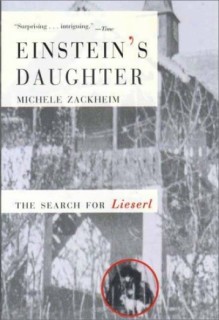 “did not spend much time at home. Sometimes he would disappear for a week, leaving Mileva ignorant of his whereabouts. Mileva suspected he was spending days and nights in the arms of the plump and eager Elsa….
“did not spend much time at home. Sometimes he would disappear for a week, leaving Mileva ignorant of his whereabouts. Mileva suspected he was spending days and nights in the arms of the plump and eager Elsa….
“We do not know how Mileva found out about the adulterous liaison. But we do now that in July, after a violent quarrel, she suddenly moved out of their apartment and, with the boys, went to live in the home of the Haber family.”[46]
On October 10, Einstein wrote to Elsa saying that Mileva “is the most sour sourpuss that ever existed. I shudder at the thought of seeing her and you together. She will writhe like a worm if she sees you even from afar!”[47]
Mileva later complained that “we are a bit unimportant to him and that we take second place.”[48]
Mileva’s complaint was not without evidence. Einstein himself wrote to Elsa, “I treat my wife as an employee whom I cannot fire. I have my own bedroom and avoid being alone with her.”[49]
Writer Michele Zackheim declares,
“Mileva had planned to accompany Albert to Paris, where on March 26, 1913, he was giving a lecture on the law of photochemical equivalence. But on March 14, Lisbeth Hurtwitz, the daughter of family friends, wrote in her diary that she and her mother had visited Mileva and were shocked to see Mileva with her face badly bruised and swollen.
“Albert explained that it was caused by a dental problem. Mileva would not answer her friends’ inquiries. Albert traveled to Paris alone.”[50]
Zackheim says that even after all the humiliation, “Mileva persisted in trying to hold her marriage together.”[51] Then Albert unleashed a list of unreasonable demands to Mileva, which the Daily Mail called “a misogynistic manifesto”[52]:
“Albert decided that if Mileva wanted to stay married to him she would have to obey his rules: ‘A. you will see to it (1) that my clothes and linen are kept in order, (2) that I am served three regular meals a day in my room, (3) that my bedroom and study are kept in good order and that my desk is not touched by anyone other than me.
“‘B. You will renounce all personal relations with me, except when they are required to keep up social appearance. In particular you will not request (1) that I sit with you at home, (2) that I go out with you or travel with you.
“‘C. You will promise explicitly to observe the following points in any contact with me: (1) you will expect no affection from me and you will not reproach me for this, (2) you must answer me at once when I speak to you, (3) you must leave my bedroom or study at once without protesting when I ask you to go.
“‘D. You will promise not to denigrate me in the eyes of the children, either by word or by deed. Ever since you have been in Berlin, you have become quite nasty. You should know that people take an interest in the way the great man [himself, of course] behaves.”[53]

Shortly thereafter, Einstein wrote to a friend, “Life without my wife is a veritable rebirth for me personally.”[54] He continued to humiliate his lovely wife throughout his life, saying things like,
“Had I known you twelve years ago as I know you now, I would have viewed my responsibilities toward you at that time quite differently.”[55]
And then this: Mileva, Einstein declared,
“is and will forever remain for me an amputated limb. I will never again be close to her. I will finish my days far from her, feeling this is absolutely necessary.”[56]
Zackheim writes,
“Mileva still hoped that he might come back to her. Perhaps she thought that the longer he remained on his own, the better chance there was of finding a peaceful solution and keeping the family intact.
“After all, he had told her that he liked being a bachelor and that his autonomy ‘revealed itself as an indescribable blessing to me.’ She could not believe that he was asking for a divorce—it could only mean that he wanted to remarry.”[57]
In 1919, when the marriage between the two partners was finally over, Einstein’s own statement seemed to have confirmed that he did indeed get involved in physical abuse. He specifically declared to the court that he had
“no accusations against the plaintiff [his wife]….During the marriage there have been numerous scenes because of differences of opinion where on the part of the plaintiff verbal and physical abuse occurred to which I in a state of irritation…responded…
“It is true that I committed adultery. I have been living for approximately four and one-half years with my cousin, the widow Elsa Lowenthal, and since then I have had intimate relations with her.
“My wife, the plaintiff, has been informed that I have had intimate relations with my cousin since the summer of 1914. She expressed her indignations to me.”[58]
Einstein’s sexual exploration did not stop when he me Elsa. After four years of marriage with Elsa, he moved his sexual relativity to Bette Neumann, his secretary. Prior to that, he also wanted to marry Elsa’s daughter, Ilse. Ilse told a friend,
“Yesterday, suddenly the question was raised about whether A. wished to marry Mama or me….Albert himself is refusing to take any decision, he is prepared to marry either Mama or me.
“I know that A. loves me very much, perhaps more than any other man ever will, he also told me so himself yesterday….[But] I have never wished nor felt the least desire to be close to him physically….
“A. also thought that if I did not wish to have a child of his it would be nicer for me not to be married to him. And I truly do not have this wish….I do not know whether it really would be fair—after all [my mother’s] years of struggle—[if] I were to compete with her over the place she had won for herself, now that she is finally at the goal.”[59]
When the divorce between Einstein and Mileva finally occurred, “Mileva never remarried. Albert, on the other hand, was only just beginning his romantic exploits. He continued his pursuit of women and his extramarital affairs long after his marriage to Elsa.”[60]
Zackheim writes, “Clearly, Albert had no patience with and very little respect for women. The only female scientist to whom he accorded a modicum of respect was Marie Curie, and even that he could not do without qualification…Even from Elsa, he kept his distance. Once when she referred to the two of them as ‘us,’ Albert retorted, ‘talk about you or me but never about us.”[61]
Perhaps the most shocking of all, the evidence from Zackheim suggests that Einstein had abandoned his only daughter, Liesel, because she was believed to be mentally handicapped. Einstein’s younger son, Eduard, or “Tete,” born in 1910,
“developed schizophrenia as a young man, apparently in consequence of a disturbing love affair with an older woman….After Mileva’s death in 1948, Tete was placed with foster families and then again confined until his own death in 1965. Einstein made a quick visit to Tete at the Burgholzli in 1933, before leaving for the United States. After that, he broke off all contact and sent no letters…”[62]
WAS EINSTEIN A PLAGIARIZER?
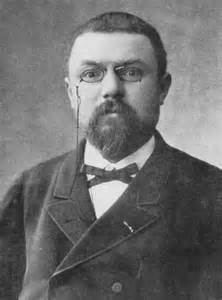
Mathematician Roger Schlafly has recently revived the long-forgotten argument that much of what is credited to Einstein has been the work of others. The noted mathematician Henri Poincare and physicist Hendrik Lorentz wrote about relativity long before Einstein ever thought about the topic. Einstein just made them popular without giving credit to whom it is due. [63]
This point was articulated by a British mathematician and historian of science Sir Edmund T. Whittaker (1873-1956), who wrote in his work A History of the Theories of Aether & Electricity that the equation E = mc2 was the creation of Lorentz and Poincare.
“Einstein’s friend and colleague Max Born had even tried to persuade Whittaker not to publish this opinion,” but Born himself later admitted that it was highly plausible that Einstein got his idea from Poincare.[64] Similar points were made by Russian physicist A. A. Logunov in his book Henri Poincare and Relativity Theory.[65]
It was after he was confronted with this fact by Whittaker that Einstein hoped that posterity would give Lorentz and Poincare some credit to the theory. As biographer Albrecht Folsing puts it,
“After nearly half a century this was the first time that Einstein ever mentioned Poincare in connection with the special relativity theory.”[66]
Biographer Dennis Brian, however, declared that the charge that Einstein got some of his work from somewhere else has little weight. The evidence? No one, not even Poincare, argues Brian, has ever charged Einstein of plagiarism.
But Brian failed to mention that Lorentz came close to saying that Einstein snatched relativity out of his hand: “Einstein simply postulates what we [Lorentz and Poincare] have deduced.”[67]
Schlafly argues:
“On every essential part of special relativity, Poincare published the same idea years earlier, and said it better. It was Lorentz’s and Poincare’s work, not Einstein’s, that led to time being considered the fourth dimension.”[68]
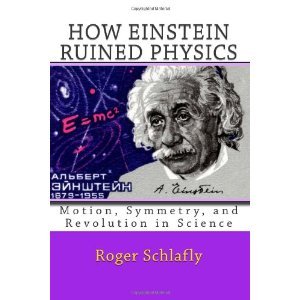 Shlafly continues to say that while historians “prefer to credit Einstein” for the theory, “no one can dispute the fact that Poincare discovered all the elements of special relativity with help from Lorentz and others, published them before Einstein, and developed a theory that was either identical or observationally equivalent to Einstein’s.”[69]
Shlafly continues to say that while historians “prefer to credit Einstein” for the theory, “no one can dispute the fact that Poincare discovered all the elements of special relativity with help from Lorentz and others, published them before Einstein, and developed a theory that was either identical or observationally equivalent to Einstein’s.”[69]
Einstein’s 1905 paper in particular “fails to cite any references to the scientific literature. The failure is extremely odd,” since “the best mathematical physicists in Europe had been writing papers on the subject for ten years, and Einstein did not cite any of them.”
Einstein “uses some of Poincare’s terminology without mentioning Poincare’s name. Einstein is not just sloppy; he is artfully vague about his sources.”[70] Here is how Einstein defended his position:
“It appears to me that it is the nature of business that what follows has already been partly solved by other authors. Despite that fact, since the issues of concern are here addressed from a new point of view, I am entitled to leave out a thoroughly pedantic survey of the literature…”[71]
When Einstein was getting negative reviews for his theory, he quickly jumped to the anti-Semitism trump card,[72] which obviously shocked many of the scientists who were reviewing his work.
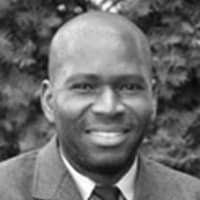
Jonas E. Alexis has degrees in mathematics and philosophy. He studied education at the graduate level. His main interests include U.S. foreign policy, the history of the Israel/Palestine conflict, and the history of ideas. He is the author of the new book Zionism vs. the West: How Talmudic Ideology is Undermining Western Culture. He teaches mathematics in South Korea.
ATTENTION READERS
We See The World From All Sides and Want YOU To Be Fully InformedIn fact, intentional disinformation is a disgraceful scourge in media today. So to assuage any possible errant incorrect information posted herein, we strongly encourage you to seek corroboration from other non-VT sources before forming an educated opinion.
About VT - Policies & Disclosures - Comment Policy



